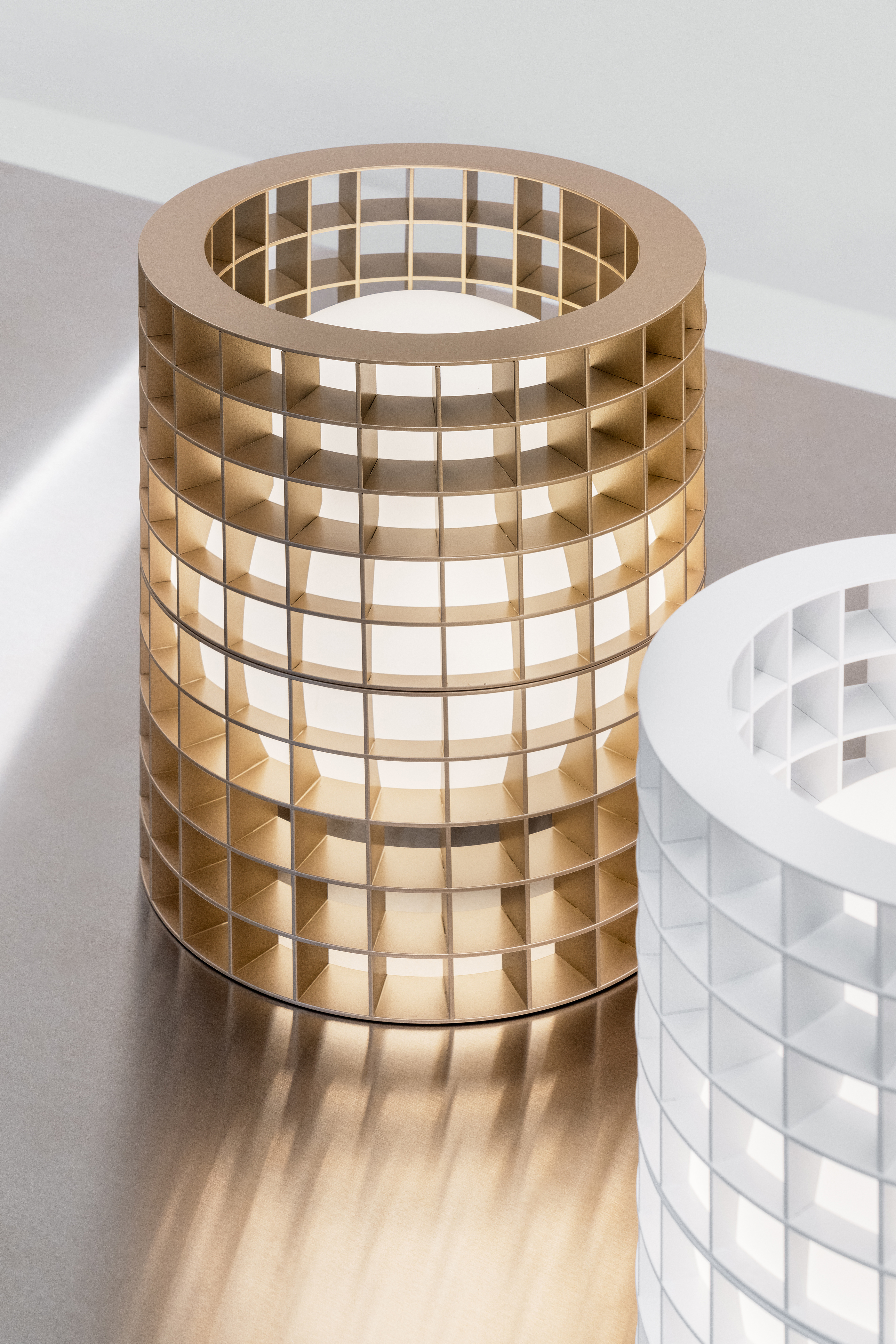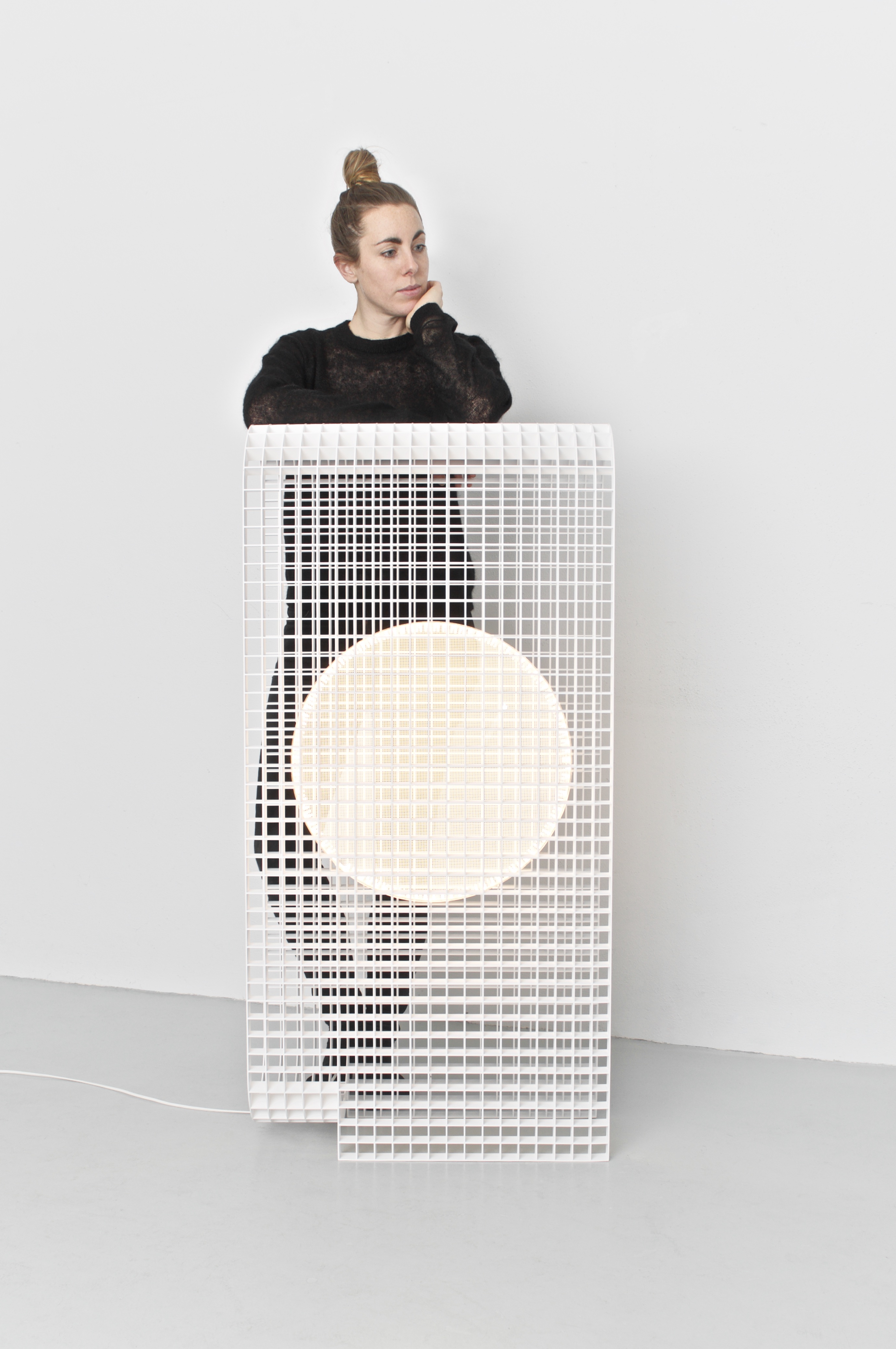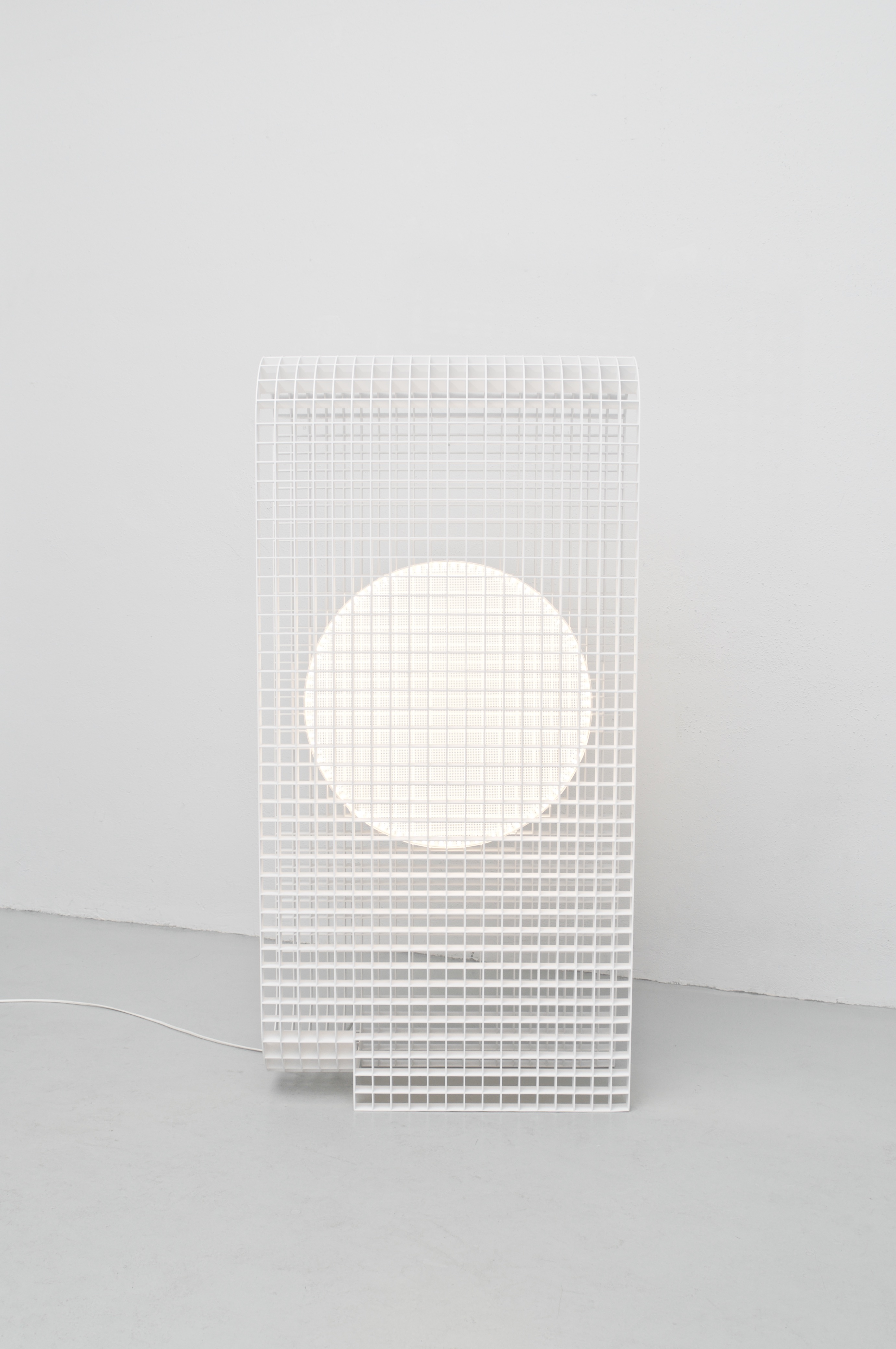Matrix for FontanaArte
When referring to the term matrix, we generally think of a square matrix commonly used in mathematics, i.e. a combination of rows and columns. A third dimension is added by introducing a circle that surrounds the matrix like a ring. The design object becomes a lamp thanks to a light globe, positioned internally and centrally to the matrix, which emits a soft and diffused light in all directions. The grid structure plays with the simple and pure shape of the illuminated sphere. The components of Matrix create transparencies and cast unusual geometric shadows on the surrounding surfaces when viewed from different perspectives.
The Matrix project began as a system to allow for endless configurations.
The base concept is derived from architectural constructions and solutions for multi-purpose situations, i.e. from the concept of form meeting function.
Made of glass and metal, the table lamp Matrix is available in two sizes - medium H.30cm and large H.60cm, both ø 30cm - in white and matt gold versions equipped with LED light source and dimmer to calibrate the desired light intensity.








REPEATED MIRROR
no. 2






photo by Ronald Smit
![]()
the mirror with blue glass, silver mirror foil and verde india marble

the mirror with blue glass, silver mirror foil and verde india marble

dimensions: 111 x 152 x 5,4 cm
materials: marble, glass, bronze mirror foil
materials: marble, glass, bronze mirror foil


Repeated Mirror in a private residency in Beirut
Repeated Mirror at Mint
MATRIX
light
light
The Matrix project is and began as a system to allow for endless configurations and constructions. The base concept is derived from architectural constructions and solutions for multipurpose "form meets function" situations.
As the construction of the Matrix is built up of individual ribs, the ribs can be designed any which way. This allows the system to be applied to products as well as interior features, or even architectural structures themselves.
When viewed from the front the grid structure has a very transparent character but as the structures start to bend the transparency disappears in a gradient of light type fashion. The inner surfaces of each individual square capture and play with light and appear differently from all other perspectives.
A showcase of surfaces, seating and lighting that together show a broad application of the concept, to showcase the possibilities as well as the visual aesthetic.
dimensions: 1412 x 300 x 421 mm
materials: powdercoated steel and led panel









photo by Alexandra Izeboud





Perspective no. 1
A technique of depicting volumes and spatial relationships on a flat surface can be referenced to the viewer’s perspective or ‘point of view’. As the viewer begins to perceive the objects it becomes apparent that no two perspectives yield the same visual effect. For the juxtaposition of the light filtering foils in combination with the glass surfaces can create moments of deep density or contrasting transparency and all the variations there within.
The Perspective objects are composed of reduced forms to create the simplest of volumes, and yet self-supporting. Here everything works in threes for the ability to impede lights characteristics while passing though a surface can be changed up to 3 times. Therefore the triangle has become the core.
Perspective no.1 has the user act as the main interaction element for they are invited to move around the work, it’s their perspective in relation to the combinations of surfaces that cause interaction. In the case of Perspective no. 2 the work itself has the ability to move, rotating one or both of the circular discs reveals changes in transparency. But both thrive in combination with ambient light, the immateriality of light can be made physical though the use of the filters; as light waves move vertically and horizontally, the user can therefor play with the ability to block these wavelengths and in a way make light a tangible material.
From the beginning OS ∆ OOS have been facinated with the play of light and the manipulation there of. These works have brought this fascination to a new scale, creating objects whose intention is to combine elements that interact with their immediate surroundings.
dimensions: 110 x 45 x 178 cm
edition: limited 3 + 1 P
photos by Jeroen van der Wielen







photo by Floor Knaapen
Van Abbemuseum, Eindhoven
Broken White exhibition, 2016
curated by Mathieu Meijers

TUNNEL
cabinet
Traditional meets high tech; the tried and true sawhorse is a strong, sturdy and beautifully simple design. We have translated this traditional design to a stool that not only is constructed without any physical fasteners or glue but each element is a direct supporting element, resulting in a true form = function design.
Seeing materials today exhibiting more and more characteristics into one material. The advances in materials also are reflected by the manufacturing process and in our case the ability to rapidly precision cut round extruded tubes that interlock within each other. It’s mainly due to these adaptive processes that allows for traditional construction to be applied to new materials to gain even more advantages; in our case weight and ease of construction would be a main features.
dimensions: 190 x 40 x 75 cm
materials: aluminium







other colours availlable





